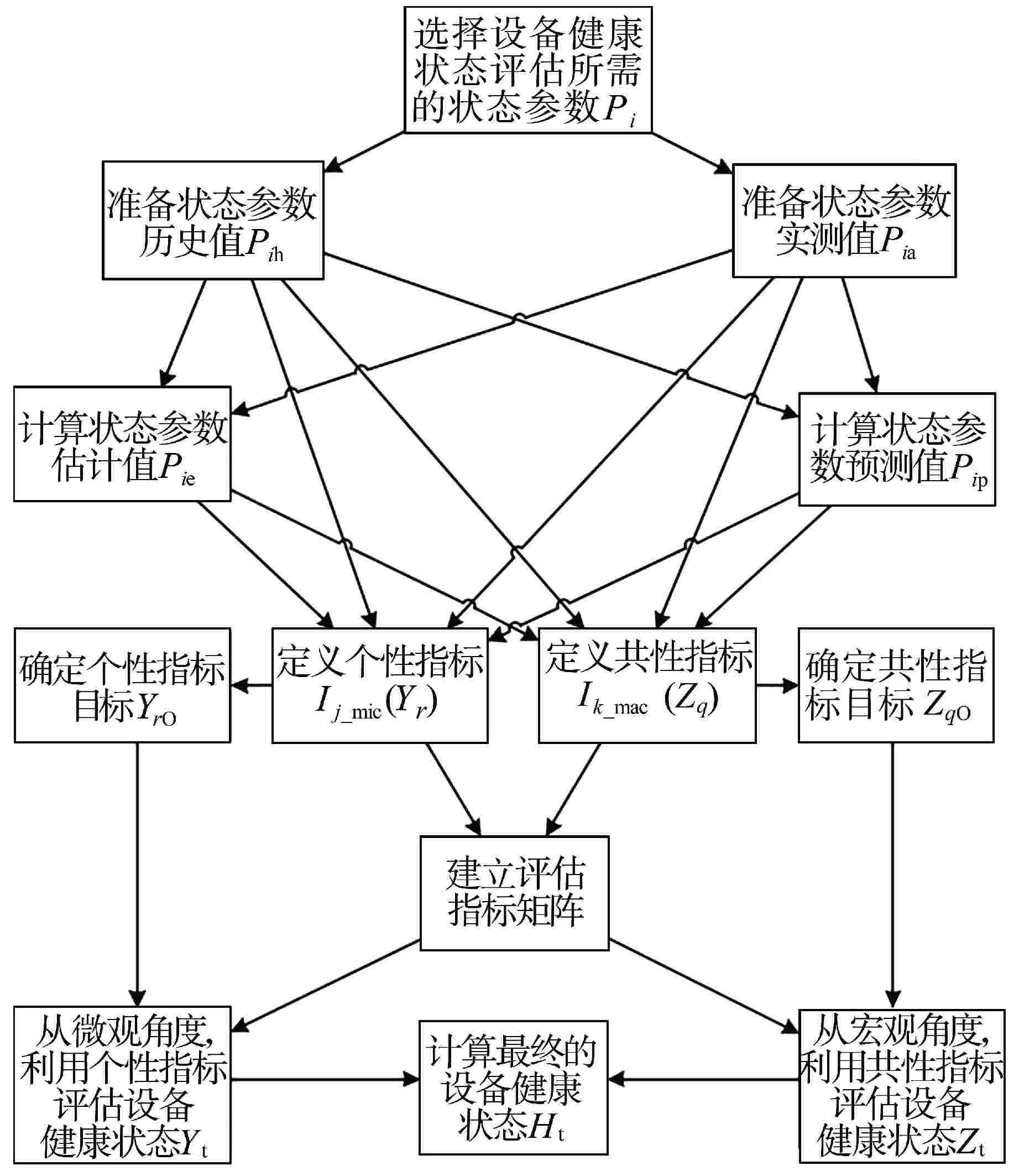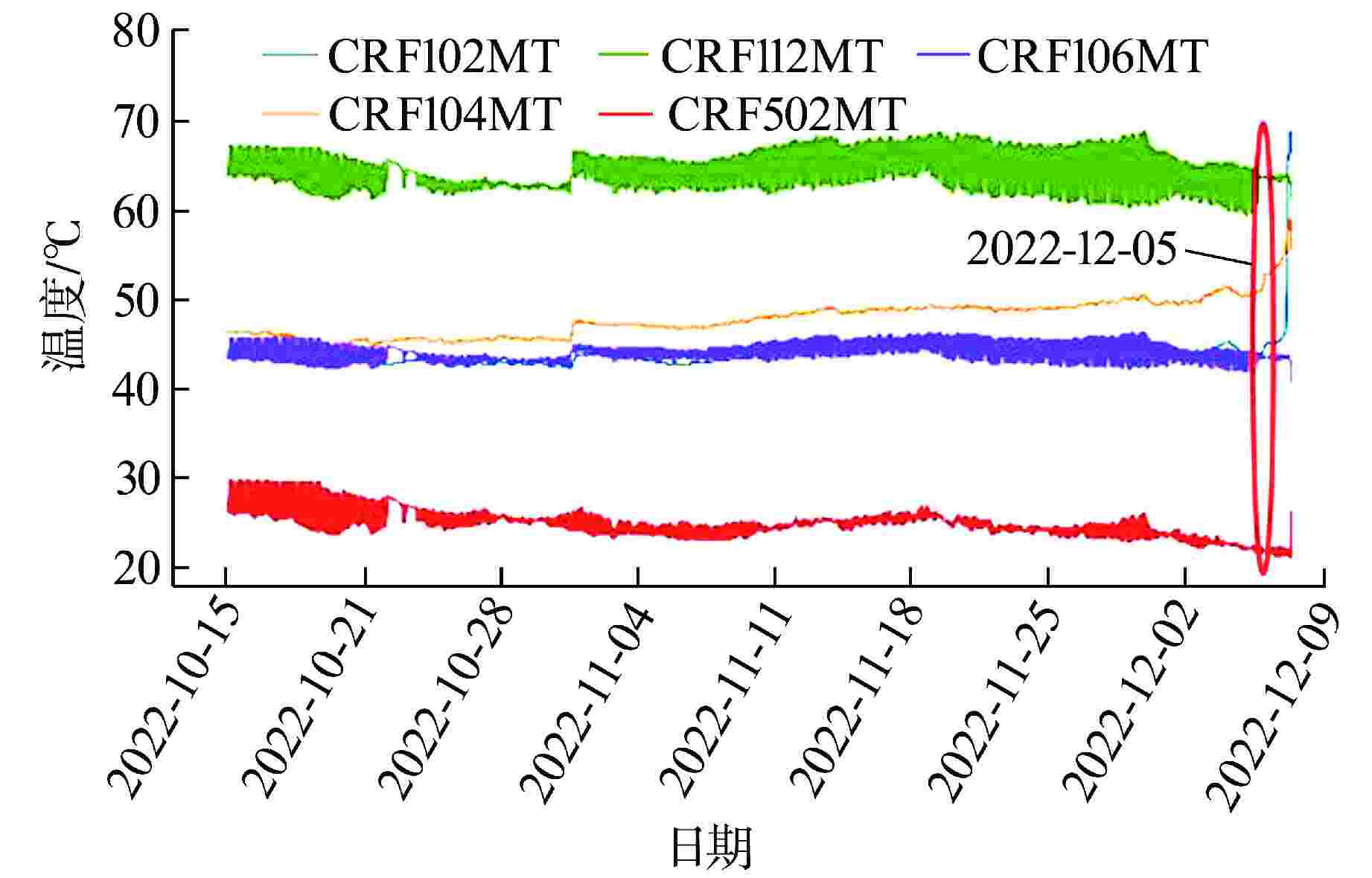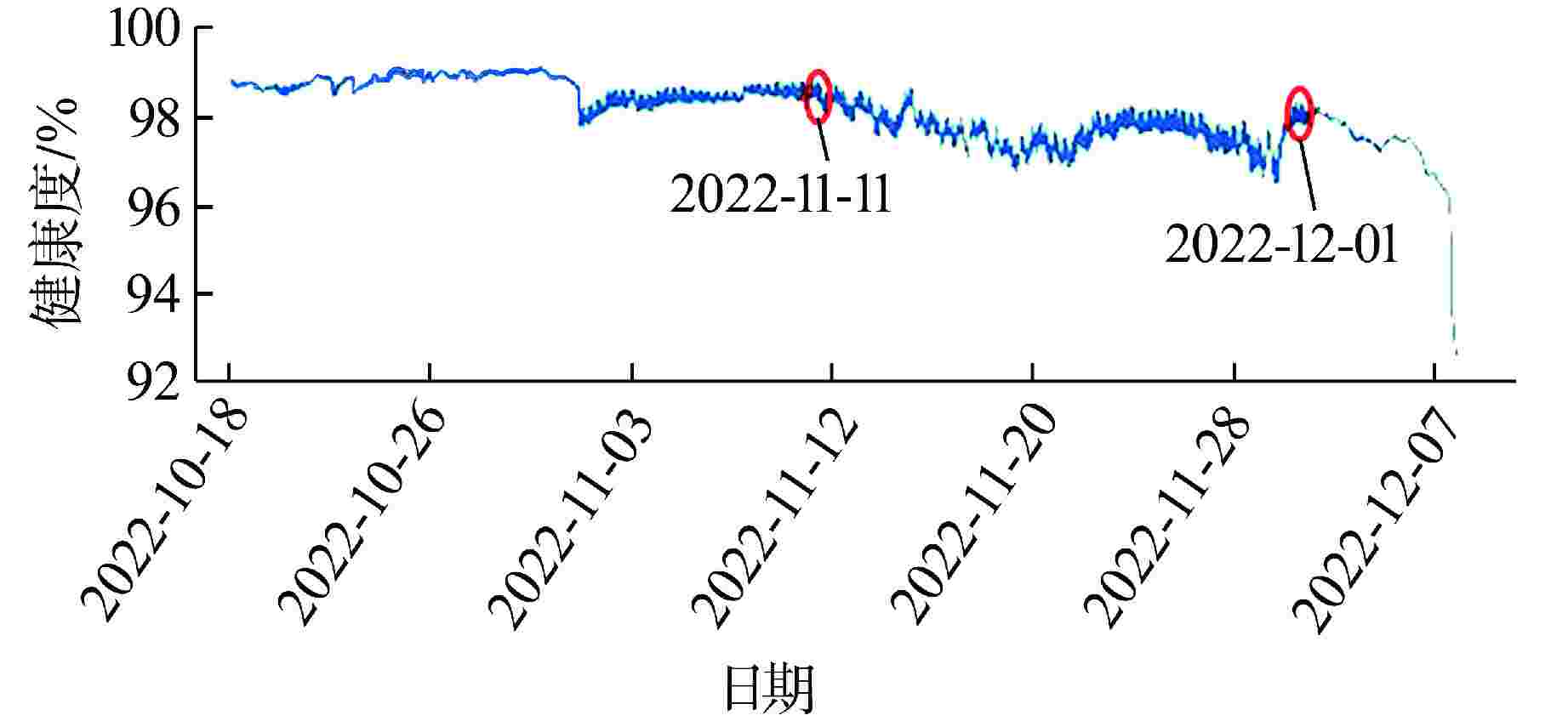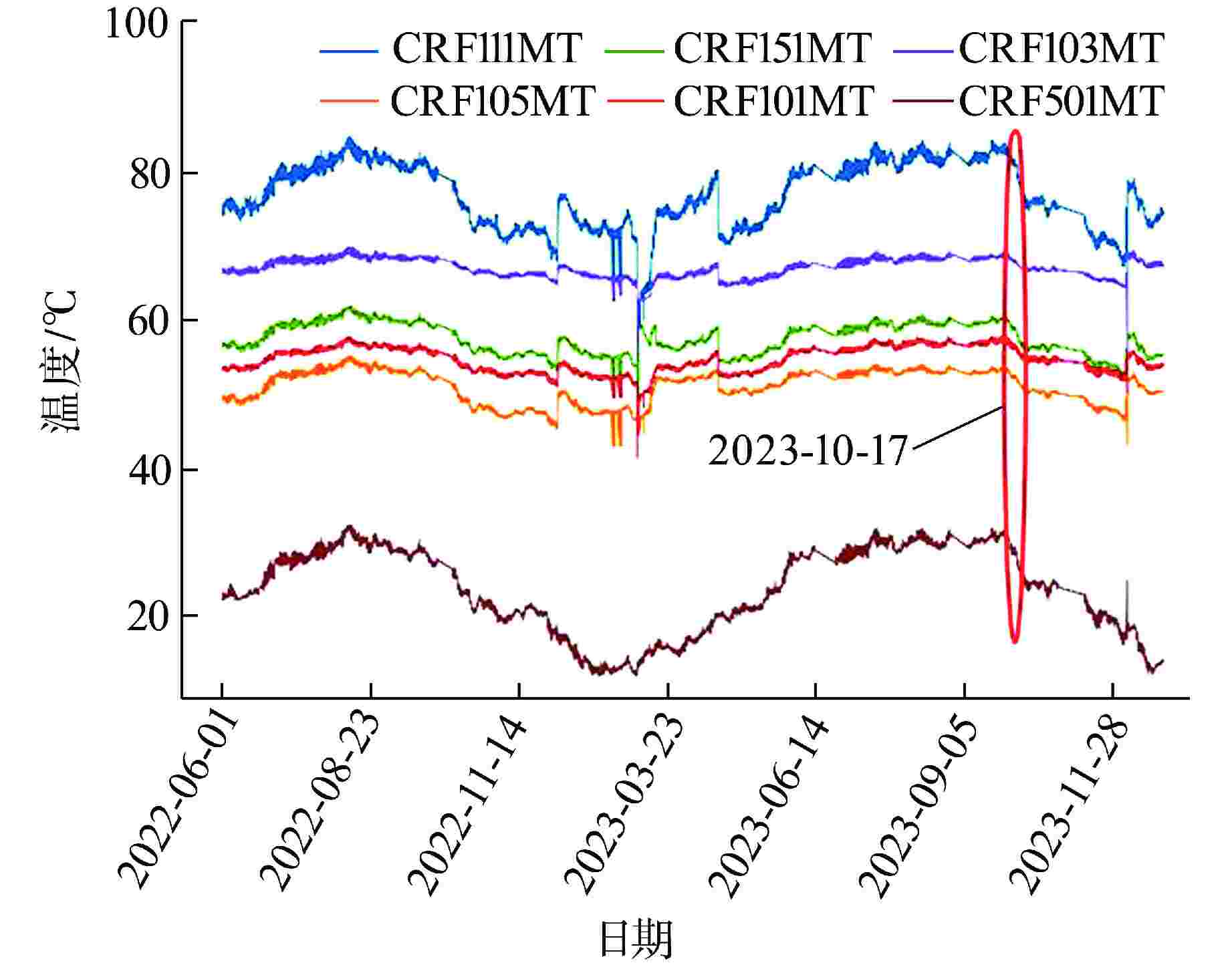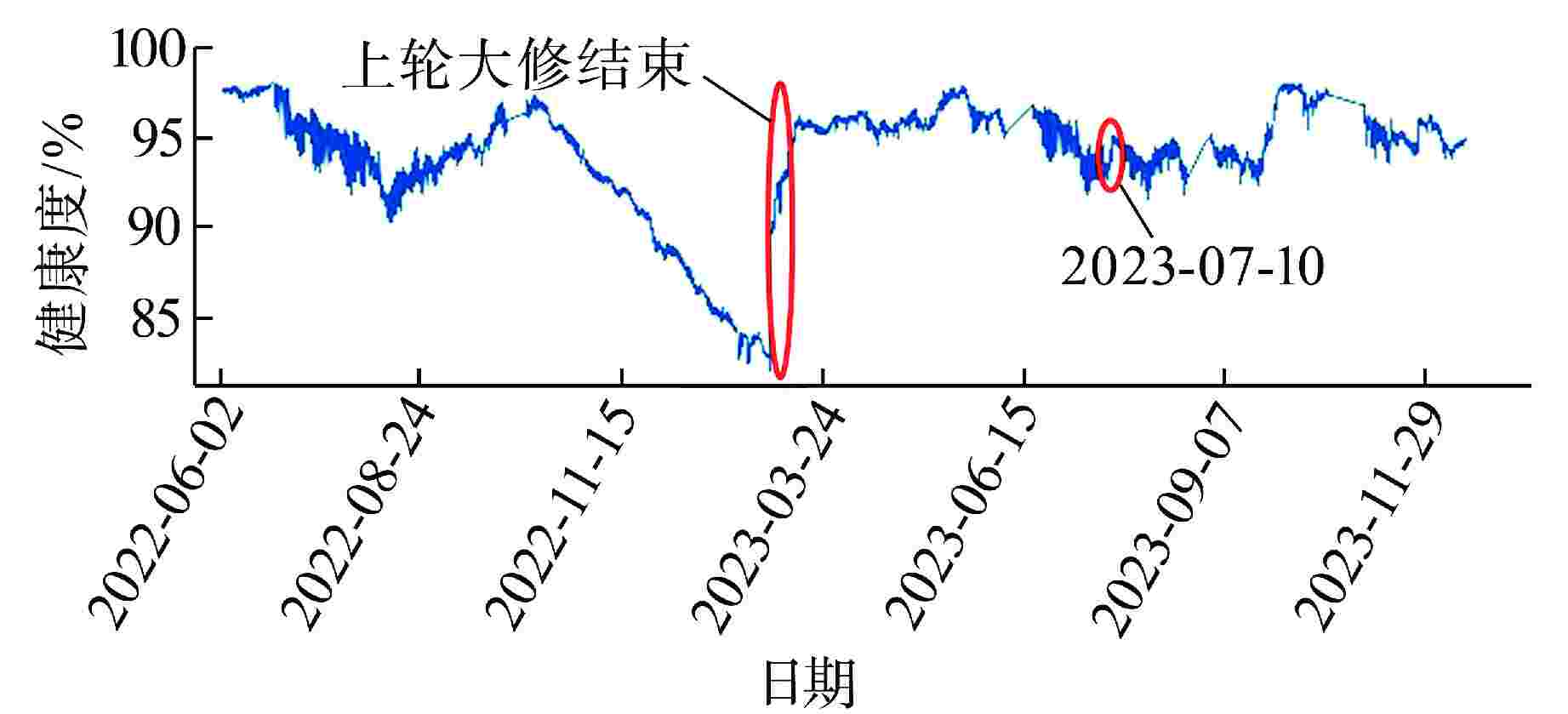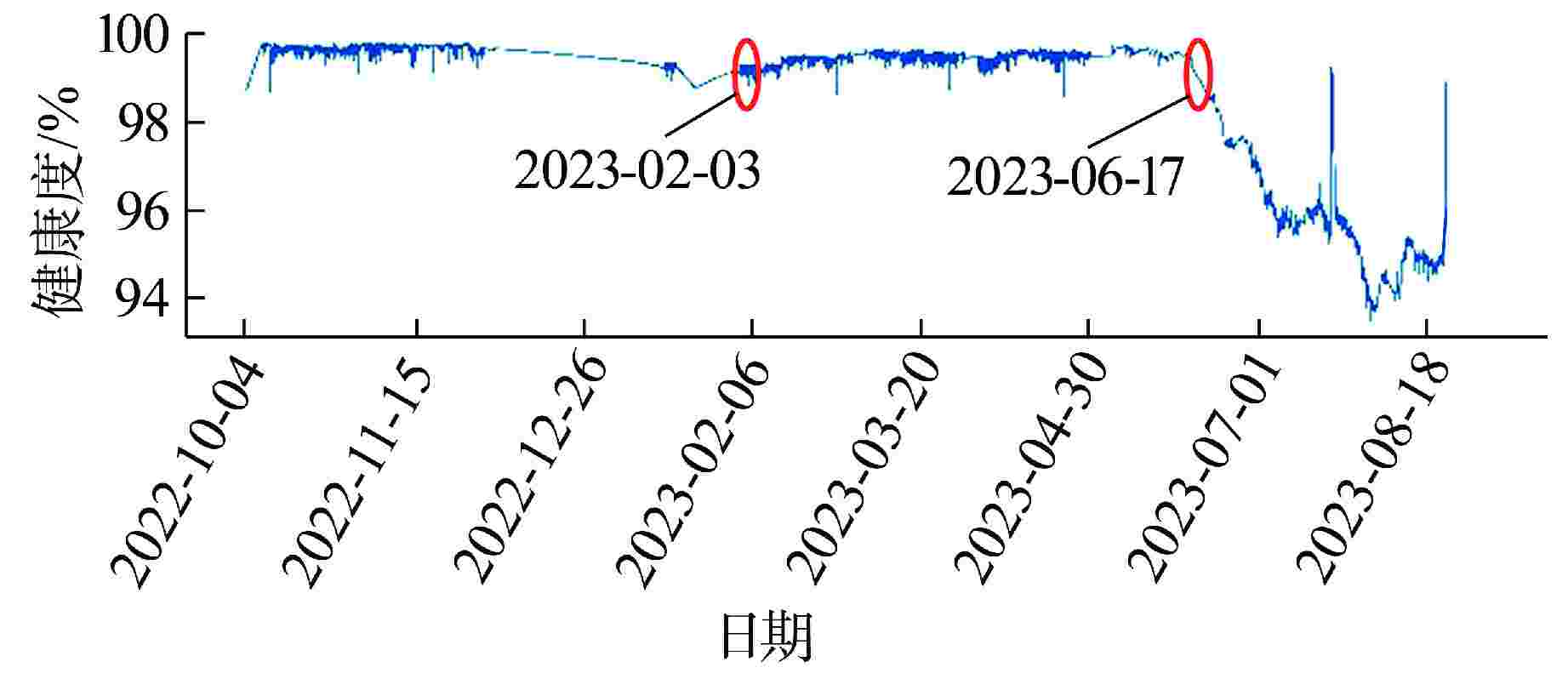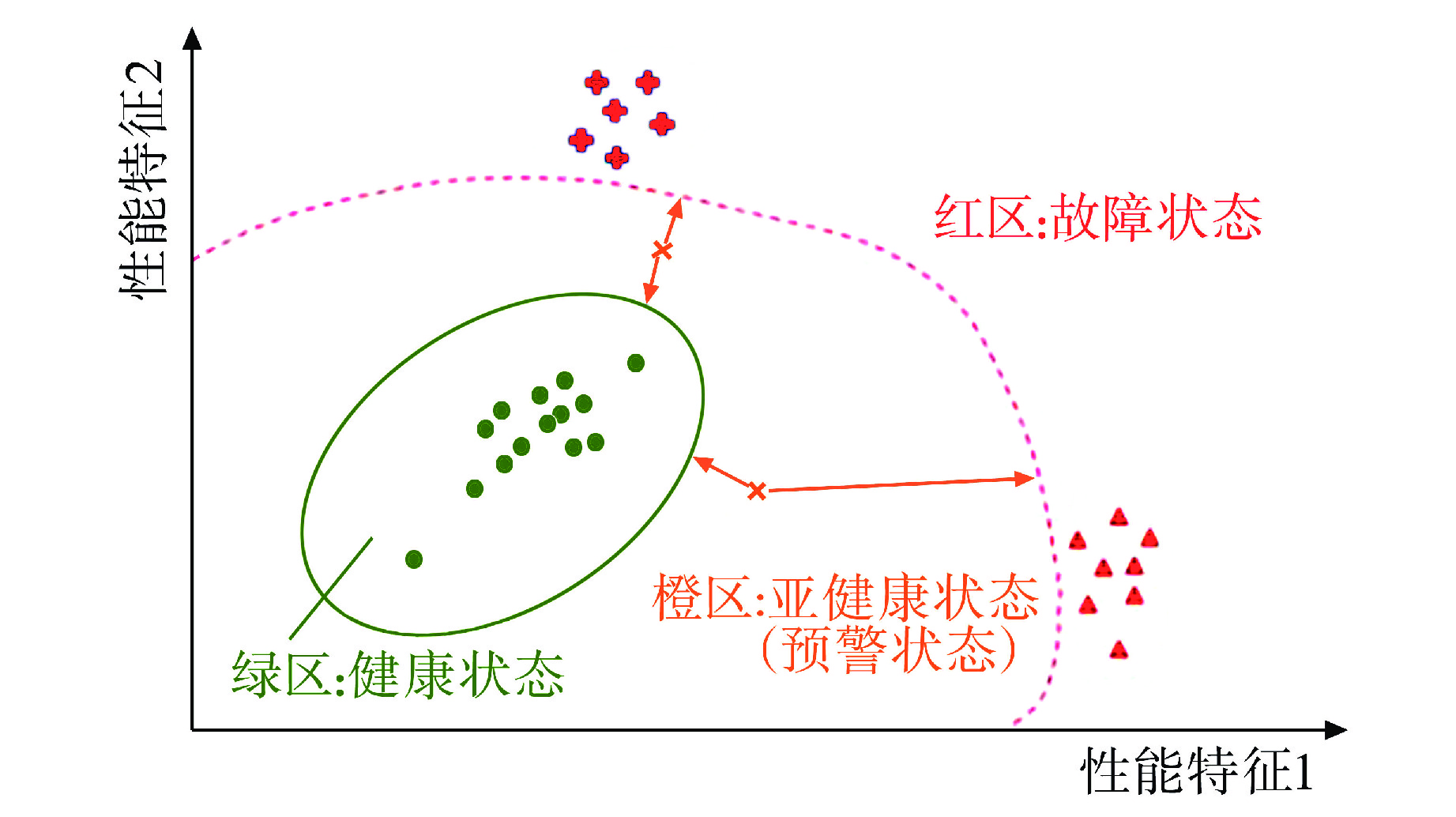General Health Assessment Method for Critical Nuclear Power Plant Equipment Based on Time-Series Characteristics of State Parameters
-
摘要: 针对核电设备现有健康状态评估方法存在准确性差、通用性低的问题,建立了一种基于状态参数时序特征的核电厂重要设备通用健康状态评估方法。该方法通过对状态参数进行时序特征分析,构建评估指标矩阵和评估模型,形成适用于核电厂多类设备状态评估的通用方法。以不同厂家、不同型号的核电厂循环水泵为例,使用该方法进行健康状态评估,其准确率达93%以上,异常发现时间大幅提前,证明本研究建立的通用健康状态评估方法能够提高核电厂设备健康状态评估的准确性,适用于核电厂多种类型的设备。Abstract: To address the issues of low accuracy and poor generalizability in existing health assessment methods for nuclear power equipment, this study establishes a generalized health assessment method for important equipment in nuclear power plant based on time-series characteristics of state parameters. By analyzing the time-series characteristics of state parameters, this method constructs an evaluation index matrix and an assessment model, and forms a general method suitable for various types of equipment in nuclear power plants. Taking circulating water pumps of different manufacturers and models as examples, the proposed method achieves over 93% accuracy in health assessment and significantly advances anomaly detection timelines. These results demonstrate that the general health condition assessment method established in this study can improve the accuracy of health status assessment of nuclear power plant equipment and is suitable for various types of equipment in nuclear power plants.
-
表 1 评估指标体系
Table 1. Assessment Index System
个性指标 状态
参数共性指标 Z1=z1(ΔPijk , W1) … Zk=zk(ΔPijk ,Wk) … Zq=zq(ΔPijk ,Wq) Y1 = y1(ΔPijk ,w1) P1 ΔP111 … ΔP11k … ΔP11q P2 ΔP211 … ΔP21k … ΔP21q P3 ΔP311 … ΔP31k … ΔP31q … … … … … … … Yj = yj(ΔPijk ,wj) Pi ΔPij1 … ΔPijk … ΔPijq … … … … … … … … … … … … … Yr = yr(ΔPijk ,wr) Pn ΔPnr1 … ΔPnrk … ΔPnrq 表 2 循环水泵组状态参数表
Table 2. Parameters of Circulating Water Pump Group
状态参数
(部分)状态参数名称 案例1
传感器案例2
传感器案例3
传感器P1 电机电流 CRF002MI CRF001MI CRF002MI P2 电机绕组温度 CRF114MT CRF111MT CRF112MT P3 电机轴承温度1 CRF106MT CRF105MT CRF106MT P4 齿轮箱轴承温度1 CRF152MT CRF151MT P5 泵轴承
温度1CRF102MT CRF101MT CRF102MT P6 泵轴承
温度2CRF104MT CRF103MT CRF104MT P7 海水温度 CRF502MT CRF501MT CRF502MT … … … … … 表 3 循环水泵组评估指标体系
Table 3. Assessment Index System for Circulating Water Pump Group
个性指标 状态
参数共性指标(部分) Z1=Pa−Pe Z2=Pa−Pp Z3=Pa−Pth Z4=Pe−Pp Z5=Pe−Pth Z6=Pp−Pth $ Z_7=\dfrac{\left|P_{\mathrm{a}}-P_{\mathrm{th}}\right|}{\left|P_{\mathrm{th}}-P_{\mathrm{s}}\right|} $ $ {Z}_{8}=\left|{P}_{\mathrm{a}}-{P}_{\mathrm{s}}\right| $ $ {Z}_{9}= $$ \left(1-\left|{P}_{\mathrm{a}}-{P}_{\mathrm{e}}\right|\right)\times $
$ (1- |{P}_{\mathrm{a}}-{P}_{\mathrm{p}} | )\times $$ \left(1-|{P}_{\mathrm{e}}-{P}_{\mathrm{p}}|\right) $Y1= similarity
(ΔP1g,ΔP1gO)P1 P1a−P1e P1a−P1p P1a−P1th P1e−P1p P1e−P1th P1p−P1th $ \dfrac{\left|P_{1\mathrm{a}}-P_{1\mathrm{th}}\right|}{\left|P_{1\mathrm{th}}-P_{1\mathrm{s}}\right|} $ $ \left|{P}_{1\mathrm{a}}-{P}_{1\mathrm{s}}\right| $ $ \left(1-\left|{P}_{1\mathrm{a}}-{P}_{1\mathrm{e}}\right|\right) \times $$ (1- |{P}_{1\mathrm{a}}-{P}_{1\mathrm{p}} | ) \times $
$\left(1-|{P}_{1\mathrm{e}}-{P}_{1\mathrm{p}}|\right) $Y2=similarity
(ΔP2g,ΔP2gO)P2 P2a−P2e P2a−P2p P2a−P2th P2e−P2p P2e−P2th P2p−P2th $ \dfrac{\left|P_{2\mathrm{a}}-P_{2\mathrm{t}\mathrm{h}}\right|}{\left|P_{2\mathrm{th}}-P_{2\mathrm{s}}\right|} $ $ \left|{P}_{2\mathrm{a}}-{P}_{2\mathrm{s}}\right| $ $ \left(1-\left|{P}_{2\mathrm{a}}-{P}_{2\mathrm{e}}\right|\right) \times $$ (1- |P\mathrm{_{2a}}-P_{2\mathrm{p}} | )\times $
$\left(1-|{P}_{2\mathrm{e}}-{P}_{2\mathrm{p}}|\right) $Y3=similarity
(ΔP3g,ΔP3gO)P3 P3a−P3e P3a−P3p P3a−P3th P3a−P3p P3e−P3th P3p−P3th $ \dfrac{\left|P_{3\mathrm{a}}-P_{3\mathrm{t}\mathrm{h}}\right|}{\left|P_{3\mathrm{th}}-P_{3\mathrm{s}}\right|} $ $ \left|{P}_{3\mathrm{a}}-{P}_{3\mathrm{s}}\right| $ $ (1- |{P}_{3\mathrm{a}}-{P}_{3\mathrm{e}} | ) $$ \times (1- |{P}_{3\mathrm{a}}-{P}_{3\mathrm{p}} | ) \times $
$ \left(1-|{P}_{3\mathrm{e}}-{P}_{3\mathrm{p}}|\right) $… … … … … … … … … … … Z1—当前状态偏离历史经典运行状态的程度;Z2—未来状态偏离当前状态的程度;Z3—当前状态接近阈值的程度;Z4—未来状态偏离历史经典运行状态的程度;Z5—历史经典运行状态接近阈值的程度;Z6—未来状态接近阈值的程度;Z7—当前状态偏离历史经典运行状态的相对程度;Z8—当前状态偏离推荐运行状态的程度;Z9—状态的稳定程度;ΔP1g—第1个状态参数按照第g个共性指标定义计算的结果;ΔP1gO—第1个状态参数按照第g个共性指标定义的最优目标;下标th—阈值类的参考值;p—预测值;s—推荐运行值类的参考值;similarity相似度的计算采用余弦相似度。 -
[1] 张红飞,夏霜,程志友,等. 基于改进马氏距离的空压机健康状态评估[J]. 电测与仪表,2018, 55(17): 32-36,93. doi: 10.3969/j.issn.1001-1390.2018.17.006 [2] 周裕华. 滚动轴承的性能退化评估与剩余使用寿命预测方法的研究[D]. 广州: 华南理工大学,2018. [3] 李康,赵乾宏,林习良,等. 一种利用多种特征信息的旋转机械设备状态评估方法[J]. 科学技术与工程,2014, 14(21): 280-284. doi: 10.3969/j.issn.1671-1815.2014.21.053 [4] COBLE J B, RAMUHALLI P, BOND L J, et al. Prognostics and health management in nuclear power plants: a review of technologies and applications: PNNL-21515[R]. Richland: Pacific Northwest National Laboratory (PNNL), 2012. [5] CARNEIRO A L G, PORTO JR A C S. Development of an integrated condition monitoring and diagnostic system for process control valves used in nuclear power plant[M]. Italy: Chemical Engineering Transactions (CET), 2013: 871-876. [6] PENG Y, ZHANG Y J, LIU D T, et al. Degradation estimation using feature increment stepwise linear regression for PWM inverter of electro-mechanical actuator[J]. Microelectronics Reliability, 2018, 88-90: 514-518. doi: 10.1016/j.microrel.2018.06.025 [7] COBLE J, RAMUHALLI P, BOND L J, et al. A review of prognostics and health management applications in nuclear power plants[J]. International Journal of Prognostics and Health Management, 2015, 6: 1-22. [8] 刘永阔. 核动力装置故障诊断智能技术的研究[D]. 哈尔滨: 哈尔滨工程大学,2006. [9] 赵明乾. 基于大数据的电力设备故障分析与诊断的研究[D]. 北京: 华北电力大学,2018. [10] WIDODO A, YANG B S. Support vector machine in machine condition monitoring and fault diagnosis[J]. Mechanical Systems and Signal Processing, 2007, 21(6): 2560-2574. doi: 10.1016/j.ymssp.2006.12.007 [11] LIU J, SERAOUI R, VITELLI V, et al. Nuclear power plant components condition monitoring by probabilistic support vector machine[J]. Annals of Nuclear Energy, 2013, 56: 23-33. doi: 10.1016/j.anucene.2013.01.005 [12] BARALDI P, DI MAIO F, ZIO E. Unsupervised clustering for fault diagnosis in nuclear power plant components[J]. International Journal of Computational Intelligence Systems, 2013, 6(4): 764-777. doi: 10.1080/18756891.2013.804145 [13] 袁野. 基于多源信息融合的设备关键部件状态评估研究[D]. 重庆: 重庆大学,2018. [14] 李志远. 多传感器信息融合深度森林的柱塞泵健康评估方法研究[D]. 上海: 上海交通大学,2020. -





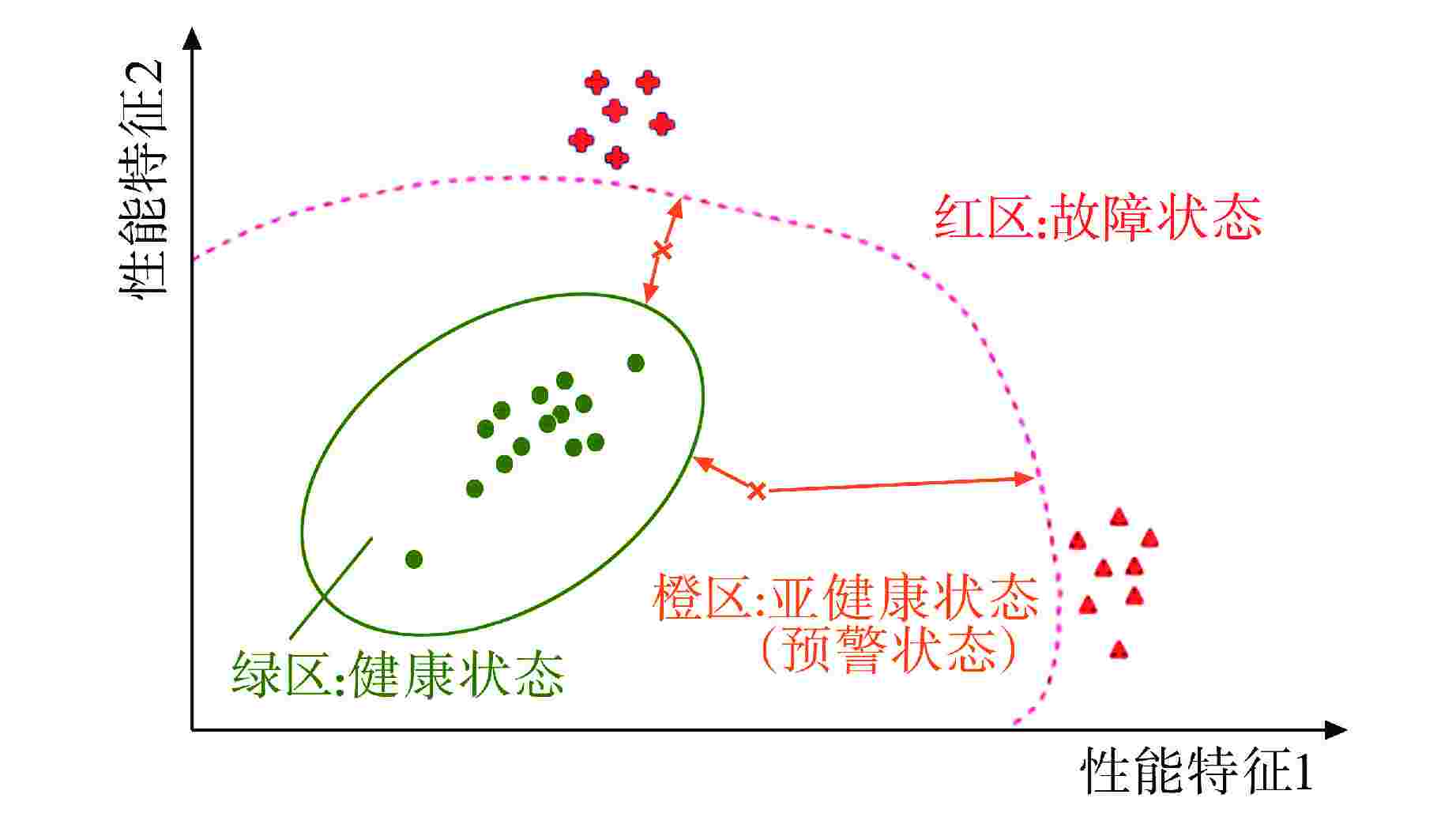
 下载:
下载:
